 President Mary K. Grant President Mary K. Grant
2002 to 2014
President Mary K. Grant, the 11th president of Massachusetts College of Liberal Arts,
was the first alumna to serve as its president.
Under Grant's leadership, MCLA is nationally recognized as a leader in public higher
education. MCLA expanded academic programs and facilities, recruited an array of faculty,
increased study away, internship, and research opportunities, created a dynamic arts
presence on Main Street, and launched the College's first capital campaign, exceeding
its goal in reaching $30 million, just to name a few initiatives.
Additionally, President Grant, advanced the science, technology, engineering, and
math (STEM) agenda in Berkshire County and statewide, spearheading efforts leading
to MCLA successfully securing $54 million to fund the Feigenbaum Center for Science
and Innovation, and toward the renovation of Bowman Hall.
President Grant also established a regional strategy, The Berkshire Compact, to improve
access and raise educational aspirations for the region.
President Grant now serves as President of the Edward M. Kennedy Institute in Boston,
MA.
|
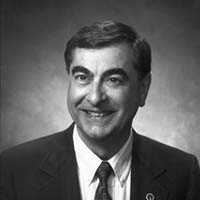 President Thomas D. Aceto President Thomas D. Aceto
1991-2002
During his tenure, President Aceto expanded the College in many ways. Among the many
initiatives, the College developed and implemented a strategic plan, initiated and
revamped academic programs, created a multimedia laboratory and classroom, and introduced
the First Year Seminar program.
Under his administration, Governor Paul Celluci signed legislation renaming the College
from North Adams State College to Massachusetts College of Liberal Arts. The name
change was intended to create the state's third special purpose college, offering
residents and others a high-quality public alternative to private liberal arts colleges.
|
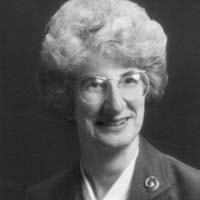 President Catherine A. Tisinger, 1984-1991 President Catherine A. Tisinger, 1984-1991
President Tisinger holds the distinction of being the first woman to serve as president
of a four-year public college in Massachusetts.
Under her administration, North Adams State College formed a consortium with Williams
College for the purpose of mutually beneficially collaborations. President Tisinger
also established a degree of cooperation between the College, Berkshire Community
College, and Greenfield Community College.
Among her honors, President Tisinger was recognized by the College of Wooster Alumni
Association as a respected leader in American Education - the highest honor bestowed
upon a Wooster alumna by fellow alumni.
|
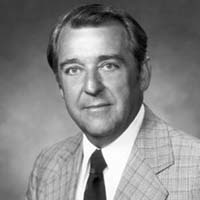 President William P. Haas President William P. Haas
1979-1983
During President Haas' administration, North Adams State College received full re-accreditation
from the New England Association of Schools and Colleges (NEASC). He established the
Cultural Affairs Council.
President Haas was well regarded as an active and engaged member of the community
and champion for public higher education in the Commonwealth. He was often quoted
as being strongly in favor of strengthening the admissions standards for the Massachusetts
State Colleges and Universities.
|
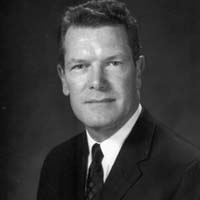 President James T. Amsler President James T. Amsler
1969-1979
During President Amsler's nearly ten years at North Adams State College, the student
body increased from 700 to 2200, the faculty expanded from 41 to 117 and the number
of administrators grew from 5 to 42.
The physical plant was enlarged with the addition of the Campus Center, Berkshire
Towers, the Townhouses, and the Center for Resourceful Living and outdoor complex.
Renovations were also done at Smith House, Murdock Hall, Mark Hopkins, and Venable
Theatre.
Under President Amsler, new degree programs in Business Administration and Medical
Technology were added, and the North Adams State College Foundation was formed as
an instrument of development in the private sector.
|
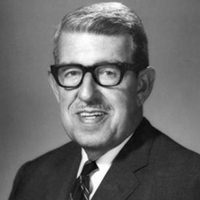 President Andrew S. Flagg President Andrew S. Flagg
1966-1969
Prior to his role as president at North Adams State College, President Flagg first
served as an Associate Professor of Art, and also held the positions of Dean of Admissions
and Dean of Men.
As interim president, he initiated changes in curriculum, leading the institution
towards a liberal arts college in accordance with the policies of the State College
Board of Trustees.
During the first year and a half of President Flagg's interim and permanent presidency,
Hoosac Hall dormitory was completed; under construction were the power plant and the
Bowman-Eldridge Freel complex. The Mark Hopkins Training School was acquired by the
state from the city of North Adams and became part of the College campus.
|
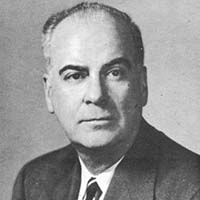
President Eugene F. Freel
1955-1966
President Freel was a faculty member in the psychology department for six years prior
to his presidency at North Adams State Teachers College.
Under President Freel's administration, the College expanded in many ways. In 1960,
the Teachers College became a full-fledged State College. Bachelor of Arts, Bachelor
of Science and Master of Science degrees were offered in nine majors including one
in medical technology - the first course of its kind in the state. A science building
(Venable) had been named, Hoosac Hall was under construction, and money had been appropriated
for a boiler plant plus the three building complex, now known as Bowman, Eldridge,
and the Freel Library, of which was later named for the president.
|
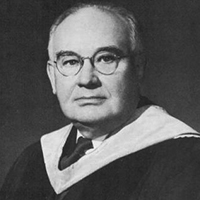 President Grover C. Bowman President Grover C. Bowman
1937-1955
President Bowman was regarded as a "teacher's teacher" who produced well trained teachers,
and was held in high esteem by his colleagues in education.
He held the role of superintendent of North Adams City Schools before his presidency
at North Adams State Teachers College.
Under his administration, North Adams State Teachers College became one of the few
teachers colleges to be accredited by the New England School and College Association.
On June 19, 1955, Bowman received an honorary degree from Williams, one of the few
northern Berkshire men outside the Williams community to be conferred with such a
degree.
|
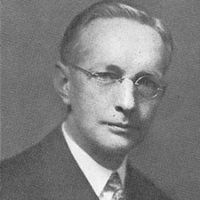 President Albert G. Eldridge President Albert G. Eldridge
1932-1936
President Eldridge was a champion of higher, even as the nation underwent challenging
times.
Prior to his role as president of North Adams Normal School, Eldridge was a faculty
member.
Under his administration, Eldridge guided the school through its transition from a
Normal School, offering two and three year courses to a four-year degree granting
college.
During his presidency, the nation was in the midst the Great Depression. President
Eldridge worked to ensure ways to allow students to remain in school during this time.
The present administration building is named for President Eldridge.
|
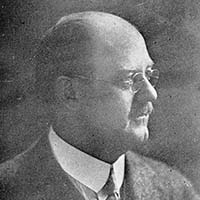 Principal Leon Smith Principal Leon Smith
1921 to 1932
Principal Leon Smith served as both faculty and administrator at the Normal School
of North Adams. He held the position of instructor of science, and also taught a range
of courses.
Under his tenure, Principal Smith provided a more comprehensive training, inaugurated
summer sessions, strengthened courses and ushered the school toward being a degree-granting
institution, which it became in 1932 as the North Adams State Teachers College.
Smith House was first named for the president in 1967, and later rededicated on June
8, 1985 during the annual meeting of the Alumni Association.
|
 Principal Frank F. Murdock Principal Frank F. Murdock
1896-1921
Principal Murdock served as the first principal of the North Adams Normal School from
1896 to 1921. A role he held for 25 years.
The North Adams Normal School was one of four created by the Massachusetts state legislature
in 1894. North Adams was selected due its rapid growth, and the need to train public
school teachers.
Principal Murdock was regarded as an ardent leader in the development of public education
in Massachusetts. Under Murdock's leadership, the North Adams Normal School became
very selective, making it an honor to be admitted.
Murdock Hall is named after Principal Murdock.
|